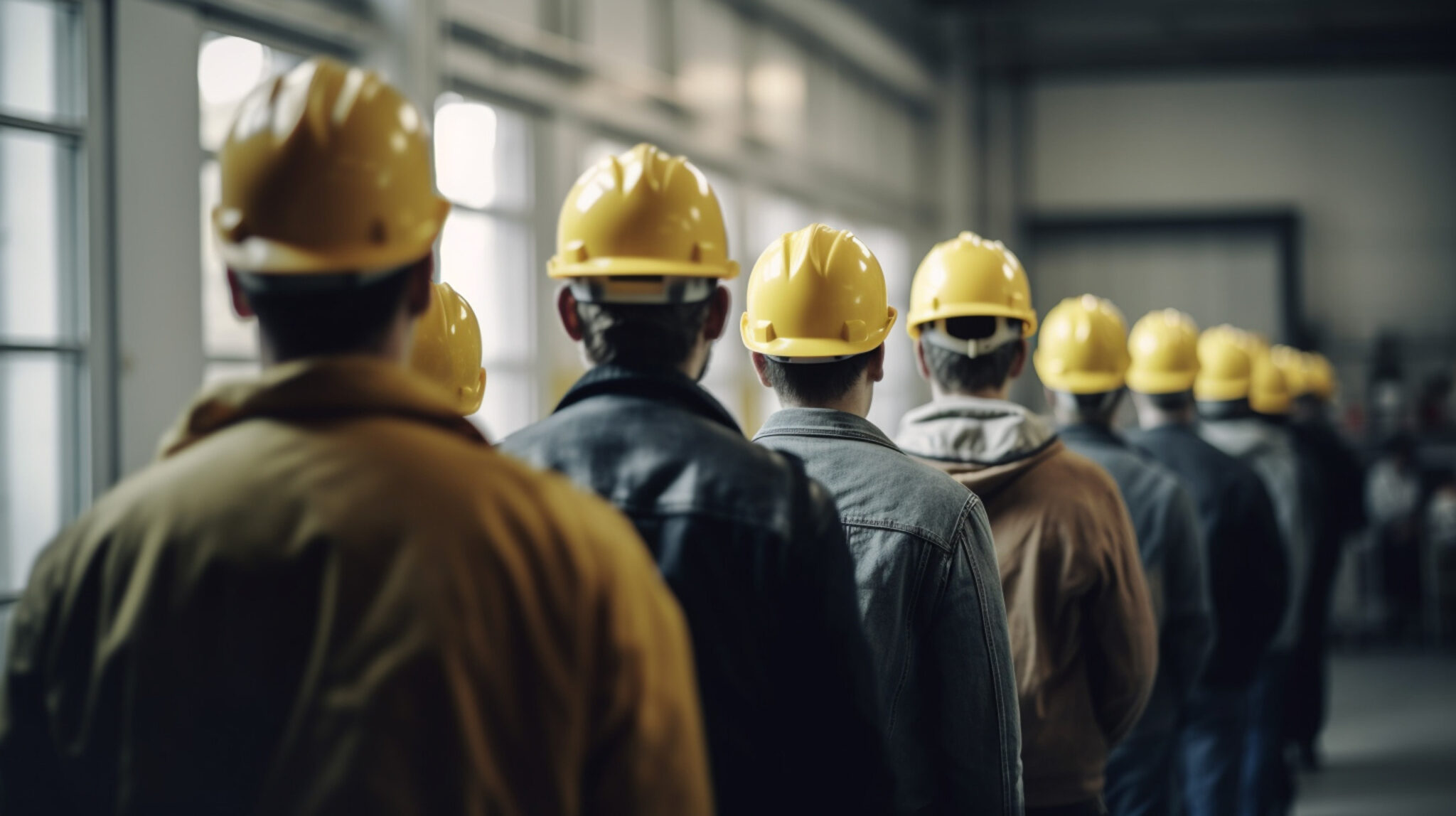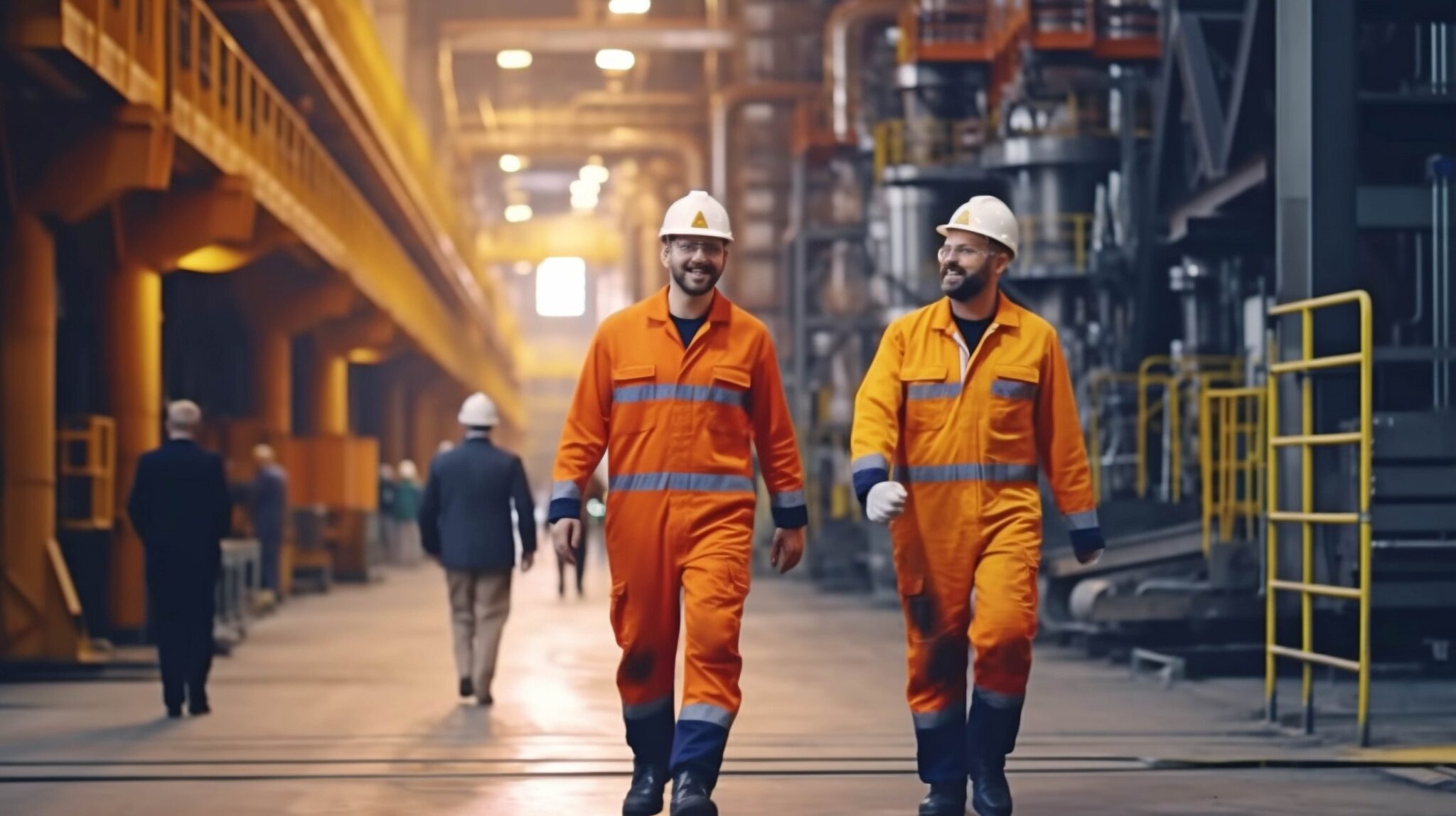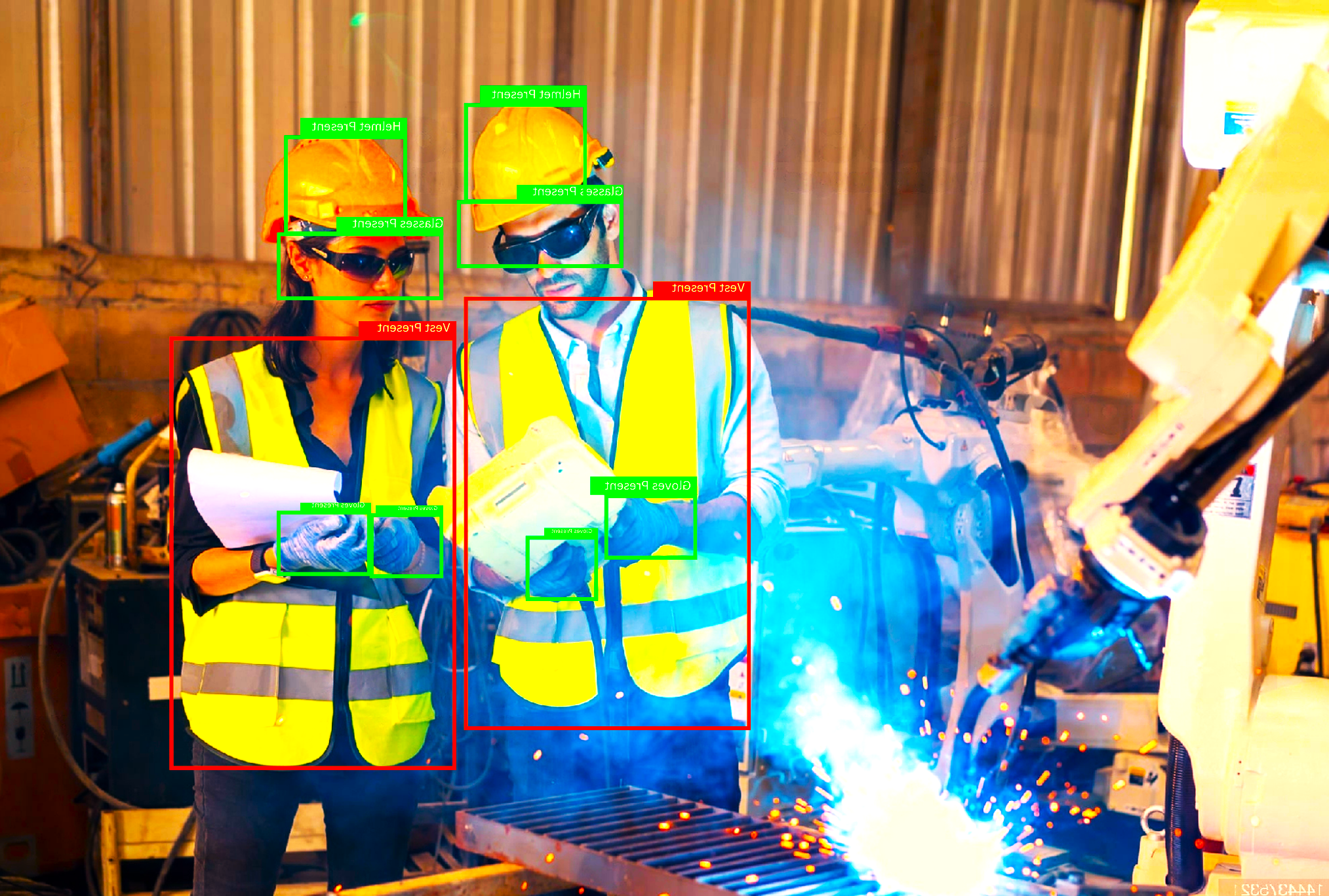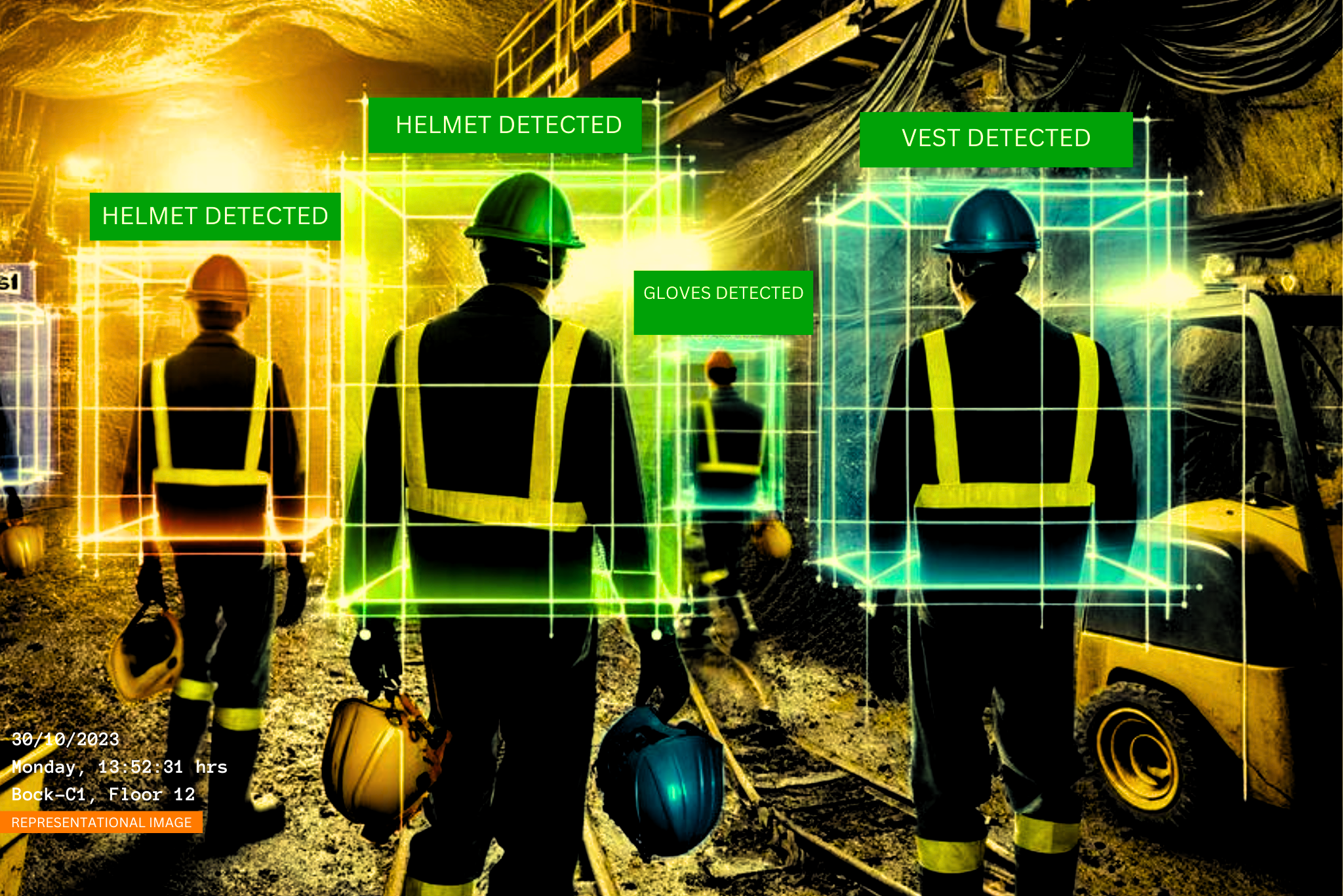Critical Role of PPE Compliance in Enhancing Workplace Safety

See It In Action

Hard Hat Compliance in Construction
See how Vision AI detects hard hat violations in real-time
Example Videos
Hard Hat Compliance in Construction
See how Vision AI detects hard hat violations in real-time
Hard Hat Compliance in Manufacturing
Vision AI PPE Compliance for Manufacturing
Key Takeaways
- Beyond Regulation: PPE compliance forms the foundation of workplace safety culture
- Comprehensive Protection: Proper PPE usage safeguards workers in both routine and emergency situations
- Compliance Challenges: Understanding and addressing barriers to consistent PPE usage
- Vision AI Revolution: How AI-powered monitoring transforms compliance verification
- Cultural Impact: The relationship between PPE adherence and organizational safety culture
- Get Started with Visionify's AI-Powered PPE Compliance Monitoring that works with your existing CCTV Cameras.
Understanding PPE Compliance: More Than Just Rules
Personal Protective Equipment (PPE) represents the final line of defense against workplace hazards when engineering controls and administrative measures aren't sufficient. From hard hats and safety glasses to respirators and protective footwear, PPE creates a critical barrier between workers and potential dangers.
However, PPE compliance extends far beyond simply providing equipment. True compliance encompasses:
- Proper Selection: Choosing PPE appropriate for specific hazards
- Correct Usage: Wearing equipment properly and consistently
- Regular Maintenance: Ensuring PPE remains in good working condition
- Replacement Protocols: Establishing clear guidelines for when to replace worn or damaged equipment
- Training and Education: Ensuring workers understand why and how to use their PPE
When implemented comprehensively, PPE compliance becomes more than a regulatory checkbox—it transforms into a cornerstone of workplace safety culture.
 Proper PPE usage protects workers from multiple hazards
Proper PPE usage protects workers from multiple hazards
The Regulatory Foundation of PPE Requirements
PPE compliance begins with understanding the regulatory framework that governs its use. While specific requirements vary by country and industry, most regulatory frameworks share common elements:
OSHA Requirements (United States)
In the United States, the Occupational Safety and Health Administration (OSHA) establishes comprehensive PPE standards through regulations like 29 CFR 1910.132 (General Requirements), which mandates that employers:
- Conduct hazard assessments to determine necessary PPE
- Select appropriate PPE based on identified hazards
- Communicate selection decisions to employees
- Train employees on proper use and limitations
- Ensure proper fit and maintenance
- Regularly reassess PPE needs as conditions change
Similar frameworks exist in other countries, such as the Health and Safety at Work Act in the UK and various directives under the European Agency for Safety and Health at Work.
Industry-Specific Standards
Beyond general regulations, many industries have specialized PPE requirements:
- Construction: Hard hats, safety harnesses, and impact-resistant footwear
- Healthcare: Gloves, masks, gowns, and face shields
- Manufacturing: Cut-resistant gloves, hearing protection, and safety glasses
- Chemical Processing: Chemical-resistant clothing, respirators, and face shields
Understanding these industry-specific requirements is essential for creating effective compliance programs.
The Dual Impact of PPE Compliance
PPE compliance influences workplace safety in two critical dimensions: physical protection and psychological reinforcement.
Physical Protection: The First Line of Defense
The primary function of PPE is to protect workers from physical harm:
- Injury Prevention: Properly worn PPE prevents thousands of injuries annually
- Severity Reduction: Even when incidents occur, PPE often reduces their severity
- Exposure Limitation: PPE minimizes exposure to harmful substances and environments
- Emergency Protection: During unexpected events, PPE provides critical protection until the situation is controlled
Research consistently demonstrates that proper PPE usage significantly reduces workplace injuries and illnesses. According to OSHA data, proper eye and face protection alone prevents an estimated 2,000 eye injuries daily in American workplaces.
Psychological Impact: Building Safety Culture
Beyond physical protection, PPE compliance plays a crucial role in establishing and reinforcing safety culture:
- Visual Reminder: PPE serves as a constant visual cue about workplace hazards
- Normalization: Consistent usage normalizes safety-conscious behavior
- Peer Influence: When everyone follows PPE requirements, it creates positive peer pressure
- Management Commitment: Enforcing PPE rules demonstrates organizational commitment to safety
This psychological dimension transforms PPE from mere equipment into a powerful symbol of an organization's safety values.
 Safety Culture in Workplace
Safety Culture in Workplace
Common Challenges to PPE Compliance
Despite clear benefits and regulatory requirements, many organizations struggle with consistent PPE compliance. Understanding these challenges is the first step toward addressing them:
Comfort and Usability Issues
- Poor Fit: Ill-fitting PPE causes discomfort and reduces compliance
- Interference: Equipment that hinders vision, communication, or movement
- Climate Factors: Heat stress from PPE in warm environments
- Extended Wear: Fatigue from wearing PPE for long periods
Knowledge and Training Gaps
- Purpose Understanding: Workers not fully grasping why specific PPE is necessary
- Usage Knowledge: Incorrect wearing or adjustment of equipment
- Maintenance Awareness: Lack of knowledge about proper care and inspection
- Hazard Recognition: Inability to recognize when PPE is required
Organizational and Cultural Factors
- Availability: PPE not readily accessible when needed
- Time Pressure: Production demands prioritized over safety procedures
- Inconsistent Enforcement: Selective or sporadic rule enforcement
- Leadership Example: Managers and supervisors not modeling proper PPE usage
Addressing these challenges requires a multifaceted approach that combines better equipment selection, comprehensive training, and cultural reinforcement.
Vision AI: Revolutionizing PPE Compliance Monitoring
Traditional PPE compliance monitoring relies heavily on manual observation—supervisors conducting walkthroughs and spot checks to verify proper usage. While necessary, this approach has significant limitations:
- Coverage Gaps: Supervisors can't be everywhere at once
- Consistency Issues: Different observers may have varying standards
- Documentation Challenges: Manual tracking is time-consuming and often incomplete
- Reactive Nature: Issues identified after the fact, not prevented
Vision AI technology is transforming this landscape by providing automated, continuous monitoring capabilities.
 Vision AI systems automatically detect proper PPE usage across the workplace
Vision AI systems automatically detect proper PPE usage across the workplace
How Vision AI Monitors PPE Compliance
Vision AI uses advanced computer vision algorithms to analyze video feeds from standard security cameras, specifically looking for proper PPE usage:
- Object Recognition: Identifying specific types of PPE (hard hats, vests, gloves, etc.)
- Presence Verification: Determining whether required PPE is being worn
- Proper Usage Analysis: Checking if PPE is worn correctly
- Zone-Based Rules: Applying different PPE requirements to specific areas
This technology works continuously, providing 24/7 monitoring without the limitations of manual observation.
Key Benefits of Vision AI for PPE Compliance
Vision AI offers several significant advantages over traditional monitoring approaches:
1. Real-Time Detection and Alerts
- Immediate Identification: Violations detected the moment they occur
- Instant Notifications: Alerts sent to supervisors via mobile devices or control centers
- Rapid Intervention: Issues addressed before accidents happen
- Consistent Enforcement: All violations detected, regardless of time or location
2. Comprehensive Data Collection and Analysis
- Compliance Metrics: Quantitative data on compliance rates across areas and shifts
- Trend Identification: Patterns in non-compliance by location, time, or department
- Root Cause Analysis: Insights into underlying factors affecting compliance
- Improvement Tracking: Measuring the impact of interventions and training
3. Operational and Cultural Benefits
- Resource Optimization: Safety personnel focused on improvement rather than monitoring
- Objective Enforcement: Elimination of perceived favoritism or inconsistency
- Enhanced Accountability: Clear documentation of compliance status
- Cultural Reinforcement: Visible commitment to safety through technology investment
 Vision AI systems automatically detect proper PPE usage across the workplace
Vision AI systems automatically detect proper PPE usage across the workplace
Implementing Effective PPE Compliance Programs
Whether using traditional methods, Vision AI, or a combination of both, successful PPE compliance programs share several key elements:
Assessment and Selection
- Conduct thorough hazard assessments for each work area
- Select appropriate PPE based on specific risks identified
- Involve workers in the selection process to address comfort and usability
- Regularly reassess as processes or conditions change
Training and Education
- Provide comprehensive initial training on PPE requirements and usage
- Explain the "why" behind PPE requirements, not just the rules
- Offer hands-on practice with proper fitting and adjustment
- Conduct regular refresher training to reinforce knowledge
Accessibility and Maintenance
- Ensure PPE is readily available at point of use
- Establish clear procedures for cleaning and maintaining equipment
- Implement easy-to-use replacement systems when PPE is damaged
- Create storage solutions that protect equipment when not in use
Monitoring and Enforcement
- Implement consistent verification processes (manual, AI-assisted, or both)
- Establish clear consequences for non-compliance
- Recognize and reward consistent compliance
- Use data to drive continuous improvement
Cultural Integration
- Ensure leadership visibly models proper PPE usage
- Incorporate PPE compliance into safety discussions and meetings
- Celebrate milestones and improvements in compliance rates
- Connect PPE usage to broader organizational values
Measuring the Impact of PPE Compliance
Effective PPE programs should include metrics to evaluate their impact and identify improvement opportunities:
Leading Indicators
- Compliance Rates: Percentage of workers properly using required PPE
- Near Miss Reports: Incidents where PPE prevented injury
- Training Completion: Percentage of workforce with up-to-date PPE training
- Inspection Results: Findings from PPE condition and availability checks
Lagging Indicators
- Injury Rates: Frequency and severity of injuries related to PPE usage
- Workers' Compensation Claims: Costs associated with preventable injuries
- Regulatory Citations: Violations related to PPE requirements
- Lost Work Days: Time lost due to preventable injuries
By tracking both leading and lagging indicators, organizations can assess the effectiveness of their PPE compliance efforts and make data-driven improvements.
Conclusion: PPE Compliance as a Foundation for Safety Excellence
PPE compliance represents far more than simply following rules—it forms the foundation of a comprehensive safety culture that protects workers and enhances organizational performance. When implemented effectively, PPE programs create multiple layers of protection:
- Physical Protection: Shielding workers from immediate hazards
- Psychological Reinforcement: Strengthening safety awareness and commitment
- Cultural Foundation: Establishing safety as a core organizational value
- Operational Efficiency: Reducing incidents that disrupt productivity
The integration of Vision AI technology is transforming PPE compliance from a manual, inconsistent process to an automated, data-driven system that provides unprecedented visibility and control. This technological evolution enables organizations to achieve higher compliance rates with less administrative burden, creating safer workplaces while optimizing resources.
As workplace safety continues to evolve, PPE compliance will remain a critical component of comprehensive safety management. Organizations that embrace both the fundamental principles of effective PPE programs and innovative monitoring technologies will be best positioned to protect their workers and achieve safety excellence.
Ready to transform your PPE compliance monitoring with Vision AI? Contact Visionify today to schedule a demonstration and discover how our solutions can enhance safety while simplifying compliance verification.
Frequently Asked Questions
Find answers to common questions about this topic
Want to learn more?
Discover how our Vision AI safety solutions can transform your workplace safety.
Schedule a DemoSchedule a Meeting
Book a personalized demo with our product specialists to see how our AI safety solutions can work for your business.
Choose a convenient time
Select from available slots in your timezone
30-minute consultation
Brief but comprehensive overview of our solutions
Meet our product experts
Get answers to your specific questions
Related Articles
Subscribe to our newsletter
Get the latest safety insights and updates delivered to your inbox.


